Author: Giubileo Magazine
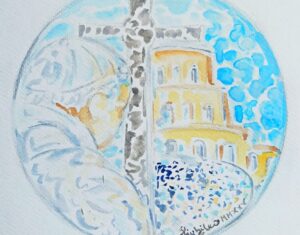
The artist Mauro Russo creates a work dedicated to the Jubilee 2025
A work for the Jubilee 2025. This initiative comes from the artist Mauro Russo Painter and serves as a good omen following Pope Francis’ discharge from the Gemelli Hospital, where he had been hospitalized since last February 14. It is a piece that aims to encapsulate a message of peace and hope, like a treasure chest of symbols and colors that lead to a universal image for believers. The work was executed in tempera on paper, measuring 25×27 cm. The profile of Pope Francis, bowed over his cross, offers his words of unity and brotherhood to the crowd at the foot of the Colosseum. The artist states: “With great enthusiasm, I conceived the idea of creating a piece for the Jubilee 2025. It was also an important opportunity to engage, through this painting, with the great masters of the past and the last century, who never missed the chance to leave their message in such events.” Mauro Russo, exclusively for GP MAGAZINE, ALCE NEWS, and GIUBILEO MAGAZINE, has shared the painting with us, and we are delighted to present this small-format work to our readers. Russo is now well known in elite artistic circles. The master has a deep connection with sacred art. We recall his great Crucifix, an oil painting on wood nearly two meters tall, which he donated to the Church of San Pantaleone in Limbadi, Calabria, his hometown. It is still preserved today in the chapel of the baptismal font.
Read More
Rome: “I bei tempi andati” – Nostalgia for the ’50s, ’60s, ’70s, ’80s, and ’90s at Teatro Le Salette
We live in nostalgic times. We long for the ’90s, the ’80s, even the ’60s, and even the ’50s. They call it “vintage.” We’re all caught up in it. We don’t like our present times. Facebook, Instagram, TikTok—many would gladly do without them just to go back. But did the good old days ever really exist? Harold Pinter passionately explores this question in this play, which rightfully belongs to the “Theatre of the Absurd,” following in the footsteps of Beckett and Ionesco. We miss the past so much that we desperately try to return to it—through plastic surgery, through old VHS tapes, and more. But isn’t it true that what we truly miss is our youth? And when we were young, without everything we have now, were we really happier? This play delves into consumerism, Thatcherism, and ourselves—our regrets, our hopes, and our daily struggles. Is nostalgia a world we should really immerse ourselves in? Did the good old days ever exist, or is it all an illusion? Is it right to move “à rebours,” backward, like a shrimp? Find out in this surreal, absurd, and subtly nuanced performance—but not too much. Enjoy the show! 📅 March 19-23📍 Teatro Le Salette, Vicolo del Campanile 14, Borgo Pio, Rome🎭 Directed by Gianfranco TomeiStarring: Arianna Cigni, Sabrina Tutone, Giancarlo Villani
Read More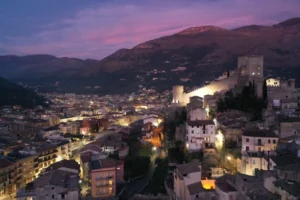
Jubilee: The first stop of the “Walks in the protected areas of Lazio” in Itri
The first significant stop of the project “Walking in the Protected Areas of Lazio – Jubilee 2025 Edition” kicks off in Itri. This initiative is promoted by the Regional Department of Environment and Tourism, led by Elena Palazzo, and the Department of Parks, headed by Giancarlo Righini. In collaboration with Cammini d’Italia, the project focuses on slow and sustainable tourism, aiming to showcase the many hidden treasures across Lazio. Throughout 2025, it will involve seven parks, one reserve, and eight historically and culturally significant walking routes. The first event is scheduled for February 22 in the historic village of Itri, where a free guided tour and a tasting of Natura in Campo-branded products have been organized. The regional councilor Elena Palazzo, a resident and former administrator of Itri, will be present at the starting point at 10:00 AM to greet visitors. At the end of the tour, participants will have the chance to learn about Itri’s renowned gastronomic excellence: the olives from which a prized oil is extracted, famous throughout Italy and highly sought after abroad. “A perfect opportunity to immerse oneself in the culture and flavors of the region,” explains Regional Councilor Elena Palazzo. “We are investing heavily in enhancing the natural areas that make Lazio so rich. These places reveal unexplored corners, breathtaking landscapes, and promote the development of slow and sustainable tourism. I am delighted that the project is starting in the southern Pontine area, which has so much to offer in this regard. Through the ‘Walking in the Protected Areas of Lazio’ initiative, we give everyone the opportunity to experience our stunning landscapes up close while also discovering Lazio’s enogastronomic excellence, which speaks volumes about our traditions and history—just like the famous Itri olives. This is the right way to promote our localities and support regional development.” The second event is set for Sunday, February 23, 2025, in the Monti Aurunci Natural Park. The walk will start from the Pornito Refuge in Maranola and lead to the summit of Monte Redentore, offering a spectacular view of the Gulf of Gaeta and the Pontine Islands. This walk will be dedicated to exploring the Cammino di San Filippo Neri. For more details on upcoming stops and to register, visit www.camminiditalia.org
Read More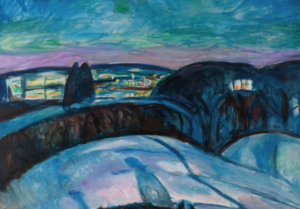
“Munch. The Inner Cry”: a major exhibition at Palazzo Bonaparte in Rome
From February 18 to June 2, 2025, Palazzo Bonaparte will host a major exhibition dedicated to Edvard Munch, one of the most important modern artists. Curated by Patricia G. Berman, one of the leading experts on Munch, the exhibition will feature 100 works by the artist, including some of his most famous pieces, such as The Scream, The Death of Marat, and Starry Night. The exhibition will focus on Munch’s life and work, exploring his human and artistic journey. Munch is known for his ability to express the deepest emotions of the human soul through his art. His works are often characterized by a sense of anguish and solitude, reflecting his personal experiences. The Palazzo Bonaparte exhibition will be a unique opportunity to get a closer look at Munch’s work and gain a deeper understanding of this great artist. Who Was Edvard Munch? Edvard Munch was a Norwegian painter, born in 1863 and passing away in 1944. He is considered a forerunner of Expressionism and one of the leading figures of Symbolism. His art was deeply influenced by his personal experiences, marked by loss and profound inner turmoil. Munch’s Works Munch’s works are known for their strong emotional impact. His paintings often depict isolated human figures set in unsettling landscapes. His use of color is intense and dramatic, contributing to an atmosphere of anguish and mystery. The Palazzo Bonaparte Exhibition The exhibition at Palazzo Bonaparte will feature a selection of 100 works by Munch, including paintings, lithographs, and prints. The displayed pieces will cover the entire span of the artist’s career, from his early Impressionist-influenced works to his later, more personal Expressionist style. Exhibition Information The exhibition Munch. The Inner Cry will take place at Palazzo Bonaparte, in Piazza Venezia, Rome, from February 18 to June 2, 2025. Tickets are already available for purchase on Ticket.it
Read More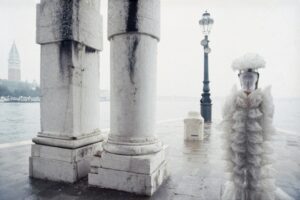
Franco Fontana “Retrospective”: An exhibition celebrating the master of color photography, until august 31 at the Ara Pacis
Until August 31, 2025, the Museo dell’Ara Pacis will host an exhibition dedicated to Franco Fontana, one of the greatest Italian photographers of the 20th century. Curated by Jean-Luc Monterosso, the exhibition will explore Fontana’s entire career, from his early black-and-white works to his most recent color creations. Fontana is renowned for his bold use of color and his ability to transform reality into pure visual poetry. His photographs are characterized by daring compositions, shallow depth of field, and vibrant colors. These elements have established Fontana as a pioneer in the world of photography—an artist who has redefined the photographic language through his unique and personal vision. The exhibition will offer visitors the opportunity to discover Fontana’s artistic evolution, from his early black-and-white landscapes to his famous color photographs of urban landscapes, cars, and shadows. Also on display will be his rare Polaroids and some of his most renowned reportages, such as the one capturing the Palazzo della Civiltà Italiana in Rome’s EUR district. The exhibition will be enriched with immersive spaces, special installations, and videos, which, together with a selection of over 200 photographs, will provide the public with a comprehensive retrospective of a photographer who has left an indelible mark on the history of photography and contemporary art. The Curator Jean-Luc Monterosso is a globally recognized curator, art critic, and historian. He was the founder and director of the Maison Européenne de la Photographie in Paris. As one of the foremost experts in contemporary photography, he has been chosen to curate this significant retrospective on Franco Fontana. The Museum The Museo dell’Ara Pacis is one of Rome’s most important museums. It houses the Ara Pacis Augustae, a commemorative monument dedicated to Emperor Augustus. The museum is centrally located in Rome and easily accessible by public transportation. Exhibition Information Title: Franco Fontana. Retrospective Curator: Jean-Luc Monterosso Dates: December 13, 2024 – August 31, 2025 Venue: Museo dell’Ara Pacis, Rome Opening Hours: Daily from 9:30 AM to 7:30 PM Tickets: Full price €10, Reduced €8 Info: https://www.arapacis.it/
Read More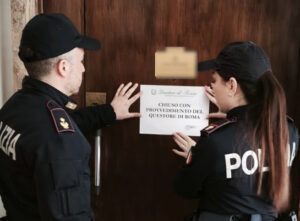
Rome: Crackdown on illegal hospitality, license suspended for a facility in the Prati district
When officers from the Prati Police Station entered the accommodation facility targeted for inspection, they found unauthorized construction work that had resulted in the creation of a room not included in the cadastral plan, as well as delays in registering guest information, a requirement under public security laws. Based on these violations, the Rome Police Commissioner issued yet another suspension order against a vacation rental located on Via Bazzoni in the Prati district, invoking Article 100 of the Consolidated Law on Public Security. The suspension of hospitality activities will be in effect for five days. Additionally, due to the irregularities in guest registration, a report was filed with judicial authorities. Specifically, two unregistered guests were found staying in the vacation rental. This operation is part of a broader effort to combat illegal practices in the hospitality sector, which the Rome police have been focusing on for months—particularly in anticipation of the upcoming Jubilee. The crackdown extends across the city’s historic center, with a special focus on areas surrounding the Vatican, enhancing safety for the many tourists and pilgrims visiting the capital daily. Since November, a total of 78 license suspension measures have been issued by the Rome Police Commissioner under Article 100 of the TULPS (Consolidated Law on Public Security) against various accommodation facilities found in violation of different regulations.
Read More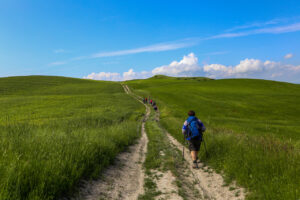
Open Paths 2025 – Jubilee Edition
The second edition of Open Paths takes place within the framework of the 2025 Jubilee and will spotlight three of the most captivating spiritual itineraries in the country: The routes and paths of Saint Francis The Lauretani routes and paths The path of Saint Benedict The event will be held on the weekend of May 10–11, 2025, offering a unique opportunity to promote slow tourism and showcase the cultural and spiritual heritage linked to Italy’s great pilgrimage routes. The first major presentation of the event will take place at BIT Milan, with a dedicated meeting scheduled for Sunday, February 9, at the Umbria Region stand. Umbria is leading this project, which also involves the regions of Lazio, Tuscany, Marche, and Emilia-Romagna. Through a targeted communication strategy and media outreach, AT Comunicazione will ensure maximum visibility for the initiative, engaging journalists, influencers, and key stakeholders from the tourism and cultural sectors. Open Paths 2025 – Jubilee Edition will feature a rich program of events, meetings, and activities along the selected routes, allowing participants to rediscover the charm of an authentic and revitalizing travel experience. “We are honored to be working on this important event, which enhances the heritage of Italy’s pilgrimage routes and supports slow tourism, especially in this Jubilee year. It’s a unique opportunity to introduce a wider audience to itineraries of great historical, cultural, and spiritual significance,” said Alessandra Agostini and Claudia Torresani, founders of AT Comunicazione. Open Paths is an initiative funded by the Development and Cohesion Fund, as part of the Ministry of Culture’s Development and Cohesion Plan, within the project The Religious Paths of Saint Francis, Saint Benedict, and Saint Scholastica – Cross-cutting Actions. https://www.italia.it/it/italia/cosa-fare/spiritualita/cammini-religiosi
Read More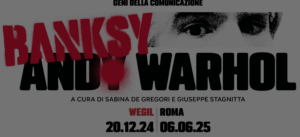
Warhol and Banksy on display until june 6 at WeGil in Rome
Kate Moss by Banksy face-to-face with Marilyn Monroe. Then, Queen Elizabeth, portrayed by Warhol with the royal diadem, side by side with her depiction as a monkey. Add to this a gallery of Mao, Lenin, and Kennedy by one, and Queen Victoria by the other. In other words, the world of Andy Warhol—the most photographed artist in the world, famous and omnipresent—contrasted with the anonymous Banksy, who has turned his art into a global media phenomenon. The two artists meet face-to-face in the exhibition “Warhol Banksy”, on display at WeGil in Rome from December 20 to June 6, 2025, which directly compares their creative journeys. This unique exhibition takes inspiration from a 2007 show curated by Banksy himself, where the enigmatic artist juxtaposed his works with those of the father of pop art. Sponsored by the Lazio Region in collaboration with LazioCrea and produced by MetaMorfosi Eventi and Emergence Festival, the exhibition documents the innovative and revolutionary paths of both artists. It features over 100 works sourced from renowned private collections worldwide and major art galleries. Behind the event lies an extensive research effort as well as significant logistical challenges. For instance, the walls brought over from London—featuring Banksy’s creations—alone weigh 800 kilograms. The exhibition reflects the contemporary approach to art, which is no longer confined to object-based pieces like traditional paintings, but has evolved into art as an event. This Dada-inspired approach creates disorientation and provocation. Warhol did this in the 1980s, primarily in the context of consumerism, while Banksy does it today with explicit references like his “Mona Lisa Smile” at the Louvre. 4o
Read More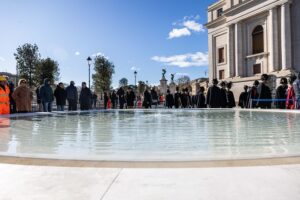
Piazza Pia: The new look for the Jubilee wins over romans and beyond
For centuries, Piazza Pia was an unresolved urban node—a dilemma that engaged Popes, designers, and city institutions in solving the challenge of access to St. Peter’s Basilica and its connection with the Bridge and Castel Sant’Angelo. Here are the milestones marking the transformations of this emblematic place, from its origins as an anonymous traffic hub to its completely renewed urban definition. During the Middle Ages, the area between Castel Sant’Angelo and Borgo was a square from which a porticoed road extended, cited in numerous documents from the 12th and 14th centuries but erased by subsequent changes in the urban fabric. The covered walkway provided pilgrims with shelter from the elements as they traveled to St. Peter’s Basilica. Major modifications began in the 15th century in anticipation of and in conjunction with Jubilees, events when Rome, then as now, embraced various urban adaptations to welcome throngs of pilgrims. For the Jubilee of 1450, Pope Nicholas V planned a redesign of the area, though it remained unfinished. Later, Pope Alexander VI ordered the first demolitions of some medieval Borgo buildings, including a pyramid-shaped mausoleum—twin to the Pyramid of Cestius—to make way for a new road that would become the main pilgrim access to the Basilica. Indulgences were even granted to those who participated in demolishing the Vatican Pyramid. The road, named Via Alessandrina after the pope who promoted it, was inaugurated for the Jubilee of 1500 and soon came to be known as Borgo Nuovo, contrasting with Borgo Vecchio, the other primary route to St. Peter’s. From the then Piazza Pia—then called Piazza Castello or Piazza di Borgo—three streets originated: the two leading through Borgo’s dense housing toward St. Peter’s and one toward Borgo Sant’Angelo. Between Borgo Vecchio and Borgo Nuovo lay the “Spina,” a block named for its elongated shape pointing toward the Tiber, with its base near St. Peter’s. The deep transformations of this area were chronicled in the 2016 Capitoline Museums exhibition “The Spina, from the Vatican Fields to Via della Conciliazione,” curated by Claudio Parisi Presicce and Laura Petacco, featuring diverse materials. By the 17th century, with Gian Lorenzo Bernini’s colonnade, St. Peter’s Square took its final form, but the connection between the Spina and the area corresponding to today’s Piazza Pia remained contentious. Pope Paul V made the first aesthetic improvements by decorating the Spina’s front with the Mascherone Fountain after bringing the Acqua Paola to the Vatican. Yet 17th-century maps depict the square as a modest widening, devoid of notable buildings, intersected by the road from Ponte Sant’Angelo and descending steeply toward the Tiber past the Santo Spirito Hospital. The area remained largely unchanged until 1852, when architect Luigi Poletti introduced two architectural facades on either side of the Spina’s tip. These twin facades, with travertine pilasters and capitals, clad the modest rear buildings, creating what Gianfranco Spagnesi called “one of the last urban Baroque-like scenes.” In 1875, the construction of embankments to contain the Tiber began, requiring demolitions along the riverbank, creating the Lungotevere, and drastically altering the city’s relationship with its river. This arrangement, too, was short-lived. In 1911, Ponte Vittorio Emanuele II was inaugurated near Borgo Santo Spirito. While road connections to Prati were still under design, Piazza Pia itself was reshaped to accommodate vehicular traffic. The Spina was obliterated in 1936 following the Lateran Pacts, giving way to the new Via della Conciliazione, a visual manifestation of the reconciliation between Church and State and the grand new access to St. Peter’s Square from Castel Sant’Angelo. Demolitions began at Piazza Pia, with Mussolini striking the first blow to the cornice of the elongated building marking the Spina’s tip. While the demolitions were completed in a year, reconstruction was slow, hampered by wartime financial strains. The layout, completed by 1950 for that year’s Jubilee, remained unchanged until 2023. Today, tourists, pilgrims, and locals can admire Piazza Pia’s new face, transformed in just a year and five months. It has become a vibrant space in the heart of Rome, steps away from the Vatican, the picturesque Tiber with its bridges, and the magnificent dome of St. Peter’s Basilica.
Read More
The story of the official bell of the Jubilee 2025
The Official Bell of the Jubilee 2025 was created by the Pontifical Marinelli Foundry of Agnone, in the province of Isernia. This historic foundry, one of the oldest in the world, crafted a bell weighing 200 kg, with a circumference of 2 meters, tuned to the musical note D. The bell features in relief the logo of the Jubilee 2025, accompanied by the motto “Peregrinantes In Spem” (Pilgrims in Hope). The logo depicts four stylized figures representing humanity from the four corners of the earth, united with one another, with the first figure embraced by a cross symbolizing Christ, extending to become an anchor of hope. The waves below are in motion, symbolizing that the pilgrimage of life does not always take place in calm waters. In addition to the logo, the bell features other decorative elements: Four stylized angels positioned at the four corners of the earth, holding back the four winds so that they do not blow on the earth, the sea, or any plant, inspired by the passage in Revelation 7. The number four symbolizes universality, and the four corners of the earth represent the whole world. An image of the Holy Father in the act of opening the Holy Door of St. Peter’s Basilica, a gesture that marks the beginning of the Holy Year. The Door remains open for the entire Jubilee year, allowing pilgrims to cross its threshold to obtain the indulgence associated with the Holy Year, demonstrating that their pilgrimage has led them to an encounter with Christ and that the Door is always open for all people of goodwill. The coat of arms of Vatican City (the Keys given by Christ to the apostle Peter) and the papal motto “Miserando Atque Eligendo” (“With love and choosing him”), taken from the Homilies of Saint Bede the Venerable. The casting of the bell took place on December 15, 2023, in Agnone, in the presence of Archbishop Rino Fisichella, Pro-Prefect of the Dicastery for Evangelization. The Pontifical Marinelli Foundry had previously crafted bells for earlier jubilees, including the majestic bell of the Jubilee 2000, which is now located in the Vatican Gardens. For collectors and interested faithful, miniature reproductions of the Jubilee 2025 Bell are available, faithfully replicating the original and made with high-quality materials. These reproductions can be purchased from various specialized retailers. The Jubilee 2025 Bell represents a symbol of faith, hope, and unity for pilgrims from around the world, accompanying the celebrations of the Holy Year with its solemn chimes.
Read More


